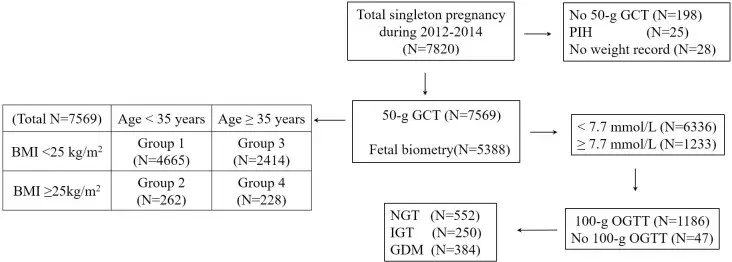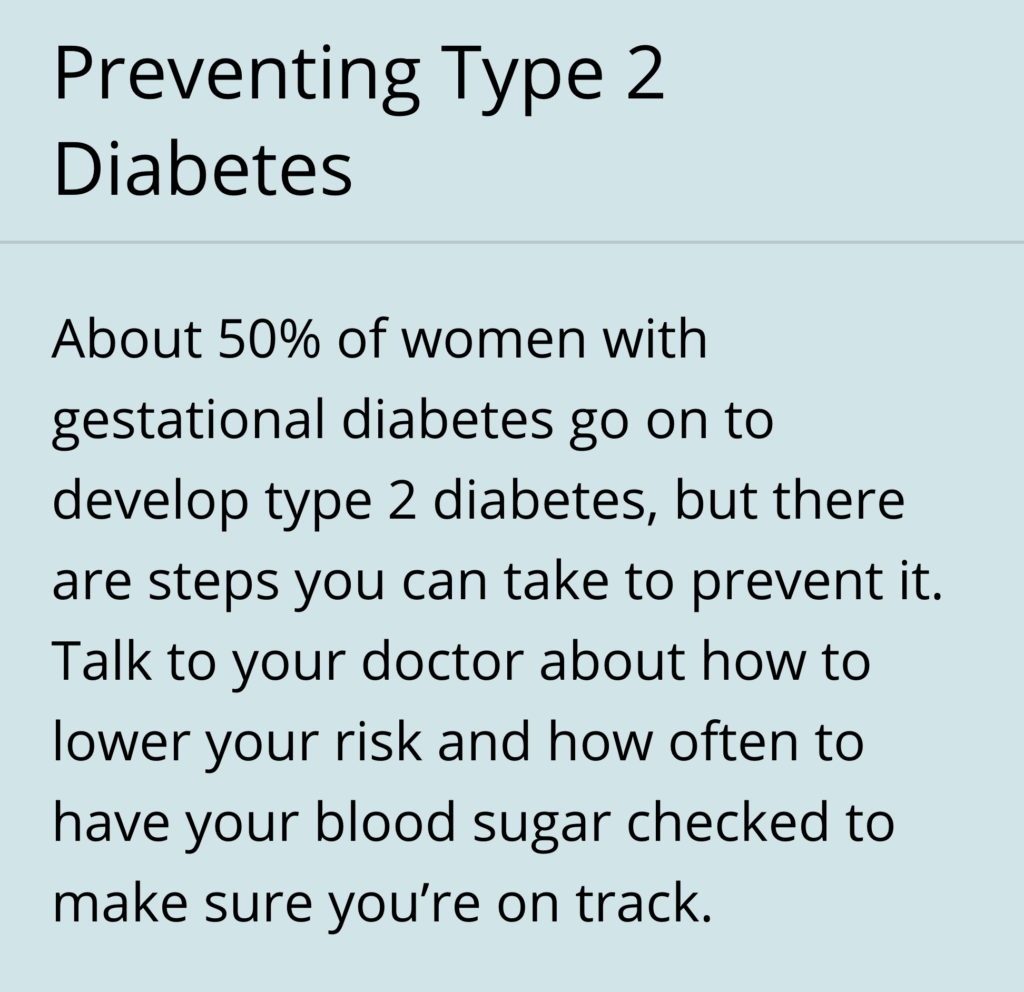Has your doctor warned you that you are susceptible to gestational diabetes? If so, there are ideal exercises to help prevent gestational diabetes.

Gestational diabetes develops during pregnancy. This condition occurs due to hormonal changes, insulin resistance, and increased demands on the body during pregnancy. Gestational diabetes can also result in low blood sugar levels, especially in women on diabetes medication or who don’t consume enough food.
Gestational diabetes can be diagnosed when the mother’s blood sugar levels are abnormally high before consuming a sugary beverage (fasted blood sugar level greater than 5.1mmol) or abnormally high two hours after consuming the beverage (blood sugar level more than 8.5mmol). It is detected between 24 and 28 weeks of gestation. It is challenging to prevent it, but a pregnant woman can take certain steps to minimize her risk.

Exercises help prevent gestational diabetes before and during pregnancy by raising the body’s insulin production. Exercises increase the amount of energy expended during and after exercise, which contributes to the reduction of blood sugar levels.
The Best Exercises To Prevent Gestational Diabetes
Exercises may require minor modifications to make them safe and effective for you, based on your pregnancy stage and the symptoms of pregnancy you are experiencing.
According to the CDC, about 50% of women with gestational diabetes go on to develop type 2 diabetes.

Aerobic Exercise
- Walking: It has low aerobic impact, is safe, and is beneficial to cardiovascular health. It does not demand any specialized equipment or dedicated workout time.
- Swimming: Your heart will continue to beat as you move through the water with your entire body. Your fitness level and the duration of your swim affect how efficiently your body uses oxygen, which is the primary benefit of preventing gestation diabetes.
- Stationary Cycling: Stationary cycling exercise is an effective and efficient method of preventing gestational diabetes. Additionally, it burns body fat and strengthens your lungs, heart, and muscles. In comparison to other forms of cardio equipment, stationary cycling has gentle pressure on joints. It provides an excellent low-intensity aerobic workout.
Strength Training Exercises
- Use light weights and maintain a high repetition count of around 8-15.
- Take appropriate rest breaks.
- Maintain an even breathing pattern throughout the exercises. Exhale as you push or pull the weight and inhale as you relax.
- Helps to ascertain proper posture.
- Don’t forget to perform pelvic floor exercises such as Kegels, which involve contracting and relaxing the pelvic floor muscles.
Flexibility Exercises
- Pilates And Yoga: These exercises can assist in stretching and strengthening muscles while also concentrating on the abdominal muscles. These exercises emphasize proper breathing techniques and relaxation, both of which are beneficial in gestation diabetes prevention.
Here is an awesome video that provides the Best Exercises to Prevent Gestational Diabetes:
What Are Different Tips to Prevent Gestational Diabetes?
Maintain Body Weight
Breastfeeding assists in regaining your pre-pregnancy weight. If you are not overweight, your body weight can reduce the risk of developing gestational diabetes and improve your health. You can keep a healthy weight by eating a balanced diet and exercising regularly.
It indicates that you consume an adequate amount of nutrients (vitamins, iron, calcium, protein, and energy) to support your baby’s healthy development. If you do not consume enough nutritious foods, you and your kid will lack essential nutrients. If you are overweight, you can gain less than 0.5kg per week if you eat healthily and regularly.
Regular Physical Activity
Regular physical activities are much beneficial in the gestational period. It can assist in maintaining a healthy glucose level. When you engage in moderate activity, you may notice that your heart rate increases slightly but not excessively. Women who were physically active throughout pregnancy reduced their chance of acquiring gestational diabetes.

Stress Management
Women with gestational diabetes frequently suffer stress and anxiety because they’re losing control of their illness, having difficulties adhering to dietary changes, and being anxious about maternal and newborn issues. This increased risk of worry, stress, and depression symptoms during pregnancy is concerning since these mental health issues can alter your hormone levels, namely your insulin levels.
Additionally, research indicates that stress, sadness, and anxiety during pregnancy are connected with lower birth weights and probable growth difficulties in infants. Stress and depression throughout pregnancy raise your risk of developing postpartum depression following delivery.
You can control your stress levels, and exercises are just good friends to lower the risk of gestational diabetes and help you relax and stay on track with your food regimen. You should focus on alleviating tension and anxiety with simple lifestyle modifications such as daily walks, prenatal yoga, meditation or quiet prayer, journaling, or a hot bath with lavender oil. These small modifications will help you stay focused on getting healthy and maintaining your health throughout your pregnancy.
Blood Sugar Tested Early
You should check your blood sugar level three months before pregnancy to ensure they are within the normal range. Strenuous exercise can temporarily raise blood glucose levels, as the body may release stored glucose to meet the increased demand for energy. Unless you exercise for a brief period, blood sugar levels should typically return to normal during or immediately after exercise. Pre- and post-exercise blood glucose levels should be checked.
If you experience elevated blood glucose levels following exercise, you can reduce the intensity of the next session and possibly increase the duration. For instance, you could spend 15 minutes jogging on a treadmill, interspersed with brief, intense sprints. If your blood glucose levels are abnormally high following the sprints, this is most likely due to excessively intense sprints. To avoid elevated blood glucose levels, you could eliminate sprints and increase your jogging time to 30 minutes.
Nutritious Meal:
Fiber-rich foods such as vegetables, fruits, wholegrain crackers, whole grain pieces of bread, and cereals should be included in each meal. It is critical to consume a variety of foods to maintain optimum nutrition. You may not require a lot of extra food while pregnant, but you do require adequate nutrition for your baby’s development.
Limiting high-fat and high-sugar foods helps you maintain a healthy weight and reduces the risk of gestational diabetes. You should choose healthier options for meals and snacks, whole grain bread and cereals instead of white, and consume plenty of veggies. Avoid meals and beverages heavy in fat or sugar (crisps, chocolate, chips, and fried foods) (biscuits, sweets, cakes, fizzy drinks, and sugary cereals).
Avoiding Hypoglycemia
Exercises of varying types and durations can have varying impacts on blood glucose levels. The particulars can be fairly complex. In general, moderate exercise does not boost blood glucose levels; on the contrary, it reduces them. If you are on some glucose-lowering medications, such as insulin, prolonged moderate activity, for example, can result in hypoglycemia.
Avoid Vitamin-D Deficiency
If you are pregnant, you should increase your vitamin D levels and metabolic indicators. Vitamin D deficiency during pregnant women has been linked to a greatly increased risk of developing gestational diabetes. Vitamin D deficiency is also associated with maternal obesity and unfavorable maternal and infant outcomes.
Vitamin-D supplementation may help reduce the risk of gestational diabetes. Vitamin D may also aid in the improvement of glycemic control in diabetic pregnant women with low vitamin D levels.
Maintain Calcium Level
An increase in dietary calcium consumption is connected with a decreased risk of gestational diabetes. Women who consume more calcium develop a low risk of gestational diabetes than women who intake less calcium. Calcium levels can be increased by consuming calcium-rich foods such as yogurt, cheese, broccoli, cooked kale, and almonds.
How Much Exercise Should I Be Doing?
If you can, try for 30 minutes of exercise every day; that’s ideal. If you’re unable to work that into your schedule, have no fear; what matters is, you should get some exercise, even if it’s as simple as getting off the bus a stop early and walking the remaining distance.
If you weren’t especially active before becoming pregnant, 30 minutes each day might seem excessive. To begin with, it may be more prudent, 15 minutes of exercise and gradually increase as you feel more comfortable.
Your targets may be different, and your exercise targets might change during the pregnancy.
The exercise you undertake should always be reasonable, not too severe. Consider moderate exercise to be any activity that leaves you slightly out of breath, with a faster heart rate and a tendency to sweat.
Does Exercise Hurt The Baby Or The Mother During Pregnancy?
Moderate exercise causes no harm to either the baby or the mother. Indeed, it improves their health. However, strenuous exercise places a greater burden on a pregnant woman’s heart. Pregnant women have more blood in their bodies, and the heart must pump more of it during activity.
Other Benefits For Labor And Fetus
- Neurodevelopmental enhancements and a decrease in body fat
- Vascular function and placental development are improved.
- Infants have a greater capacity for self-regulation and direction.
- Increased tolerance for labor pain
- Lower birth weights
- Increased gestational ages reduced the likelihood of premature birth and lowered the risk of preterm birth
- Increased viability and volume of the placenta
Conclusion:
Pregnancy may provide an excellent opportunity for women to maintain or develop healthy lifestyle habits. This opportunity to improve your health as a mother, and you must go for proper exercises during pregnancy. It would help if you established a healthy diet and exercise routine to avoid gestational diabetes.
You can adopt these natural approaches to managing your gestational diabetes. Gestational diabetes can have some negative consequences for both you and your baby; that is why it must be treated immediately after being diagnosed.
